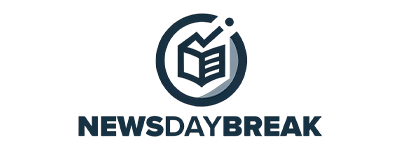Tech
Understanding SaaS: Simple Explanation and Benefits

So, you’ve probably heard the term SaaS floating around in tech circles, and maybe you’re wondering what the heck it stands for. Don’t worry—I’ll break it down for you in a way that makes it crystal clear.
What is SaaS, Anyway?
SaaS stands for Software as a Service. Essentially, it’s a software distribution model where applications are hosted in the cloud and accessed over the Internet. Unlike traditional software that you had to download and install on your computer, SaaS is like streaming your favorite series on Netflix. You access it online, and everything is managed on the provider’s end.
This means you don’t have to fuss about updates or maintaining servers; the SaaS provider takes care of all that behind the scenes. Pretty convenient, huh?
How Does SaaS Work?
Let’s dig a little deeper into how this all works:
-
- Cloud-Based: SaaS applications live in the cloud. You can access them from any device with an internet connection. This flexibility is super beneficial for remote work and on-the-go accessibility.
- Subscription Model: Most SaaS products require a subscription fee, whether it’s monthly or annually. Think of it like your gym membership; you pay for the time you use it, which can save a lot of upfront costs compared to traditional software that often comes with a hefty one-time price.
- Automatic Updates: Forget about those annoying reminders to update your software. With SaaS, updates occur automatically. You always have the latest version without lifting a finger!
The Shift from Traditional Software to SaaS
Gone are the days when you had to buy a CD or a boxed product. Software solutions have evolved, and many companies are turning to SaaS for various reasons. Here are a few factors driving this shift:
-
- Affordability: It’s often cheaper to start using a SaaS product due to lower upfront costs.
-
- Scalability: Need more features or users? No problem! You can easily upgrade your subscription based on your needs.
-
- Accessibility: Anywhere with internet access means you can work from home, a coffee shop, or even while you’re traveling. Flexibility is key in today’s work environment.
Common Examples of SaaS
To give you a better understanding, let’s look at some popular SaaS applications you might already be using or have heard of:
-
- Google Workspace: From Gmail to Google Docs, you can create, share, and collaborate with ease. Everything is accessible in the cloud.
-
- Slack: This team messaging app has revolutionized how we communicate at work, allowing for instant messages, file sharing, and even video calls.
-
- Zoom: Sure, we all know it for those awkward virtual meetings, but it’s an excellent example of SaaS that boosted remote work!
-
- Salesforce: A cloud-based solution for customer relationship management (CRM) that helps businesses track customer interactions and sales data effortlessly.
Each of these services has vastly different features but shares the same SaaS advantages.
Benefits of Using SaaS
1. Cost-Effectiveness
Let’s be real, who doesn’t want to save a buck or two? SaaS often translates to lower costs since you usually pay per user rather than a big lump sum for software. You can also save on IT costs because maintenance and support usually come included.
2. Easy Collaboration
With cloud-based services, collaborating is a breeze. Everyone can access the same information in real-time. Let’s say you’re working on a presentation with colleagues—no more searching for the latest version in your email. Everyone can jump in simultaneously, no matter where they are.
3. High Accessibility
As long as you’ve got internet access, your data is right there. Need to pull up a report during a meeting? Easy! You can access your SaaS application from your laptop, tablet, or even your phone.
4. Enhanced Security
SaaS providers invest significantly in security, often more than a small business could afford. Your data is backed up regularly, and they often provide multiple layers of security to keep your information safe. Check out this detailed resource from Investopedia on cloud security.
5. No Hardware Necessary
Since the software is hosted in the cloud, you don’t have to invest in expensive hardware or infrastructure. This is excellent for startups or small businesses trying to minimize costs but maximize productivity.
6. Focus on Core Business Functions
When you’re not worried about software updates, server maintenance, or IT hitches, you can focus on what really matters—growing your business. SaaS applications take a lot of the technical burden off your plate.
When Should You Use SaaS?
While SaaS can be a game-changer for many, it may not be the right fit for everyone in every situation. Here are some scenarios where SaaS makes total sense:
-
- Startups and SMEs: If you’re just starting and don’t want to invest a lot of cash upfront, SaaS can give you access to business tools without breaking the bank.
-
- Frequent Collaborators: If your team often collaborates on projects, SaaS offers a modern solution to keep everyone linked up.
-
- Scalable Businesses: Growing businesses can benefit immensely from SaaS’s flexibility. As you grow, you can adjust your subscription as needed.
Conclusion
Understanding SaaS can feel a bit daunting at first, but once the pieces fall into place, it’s clear how beneficial this model can be. From cost savings to increased accessibility, it brings a lot to the table. Next time someone mentions SaaS, you’ll be ready to jump into the conversation with confidence!
So whether you’re a tech guru or just someone looking to streamline your work processes, SaaS might just become your best friend in the digital world.
